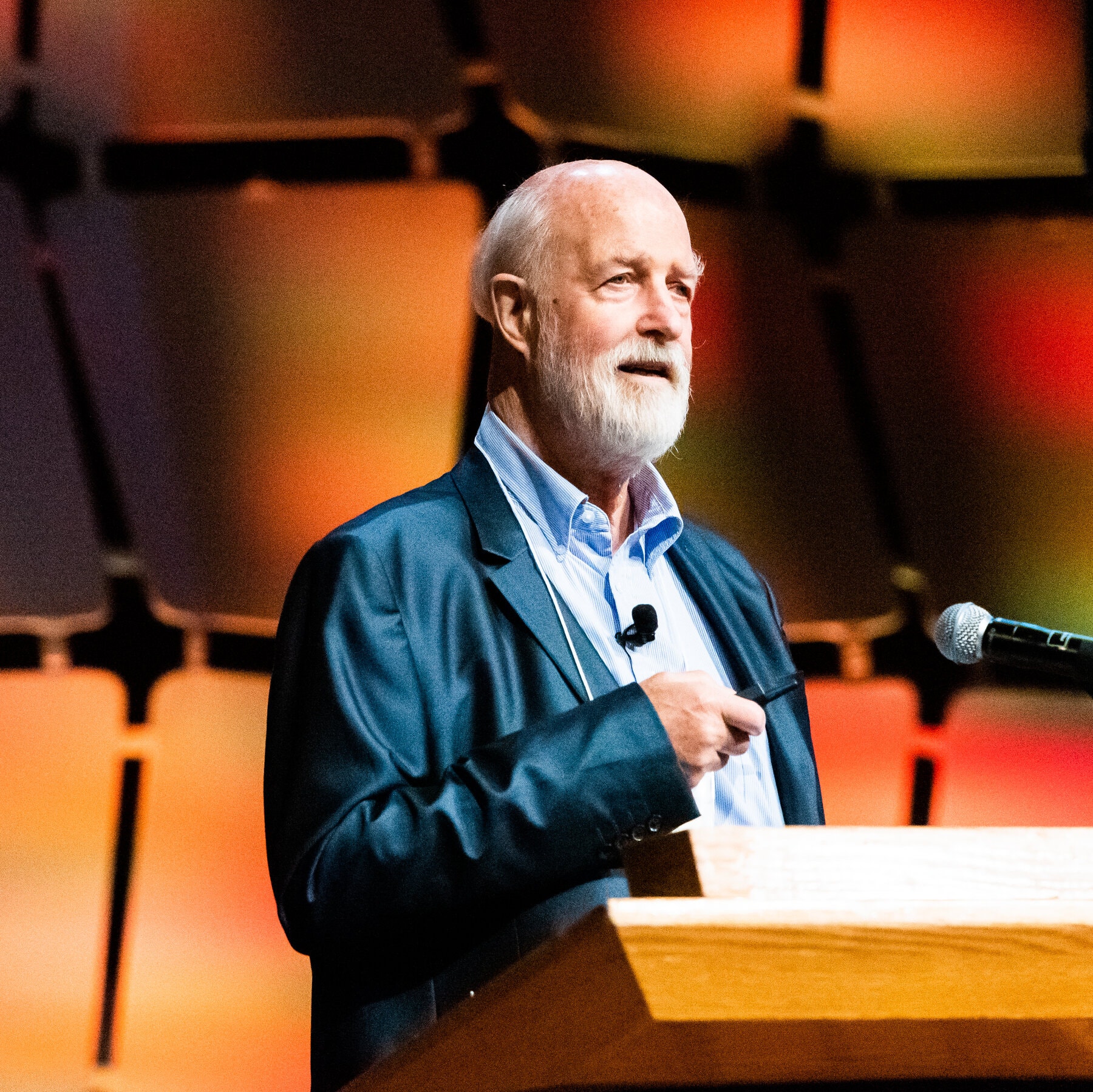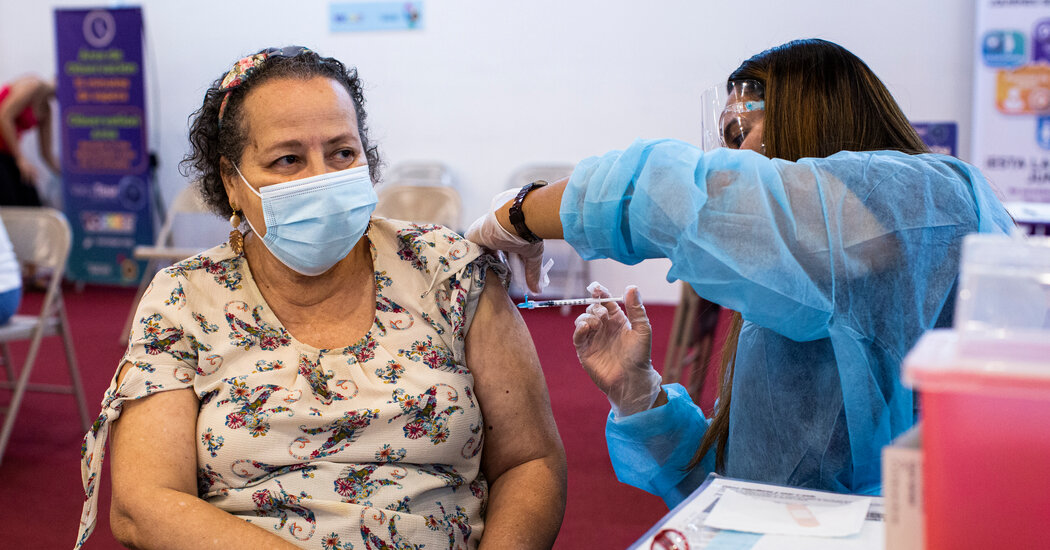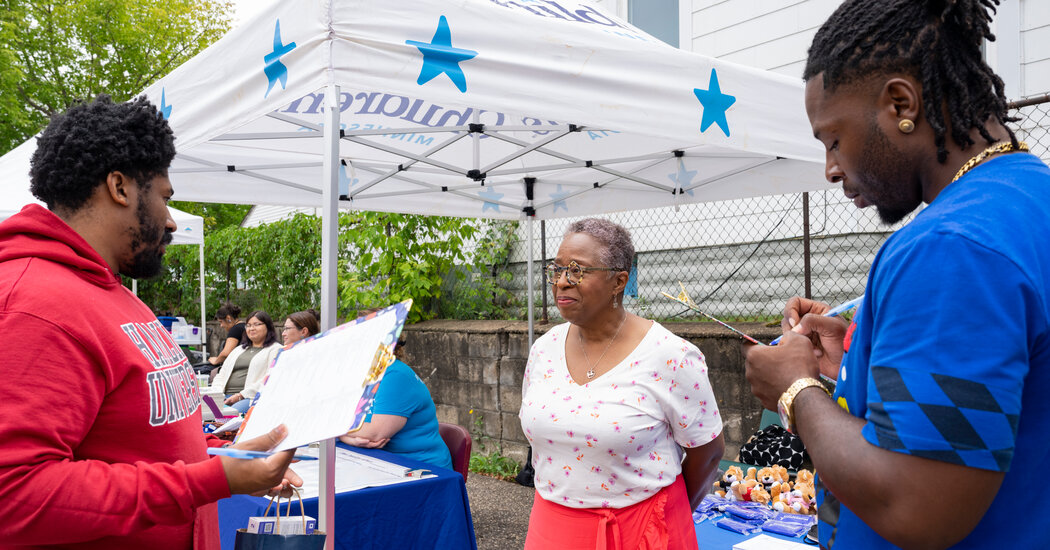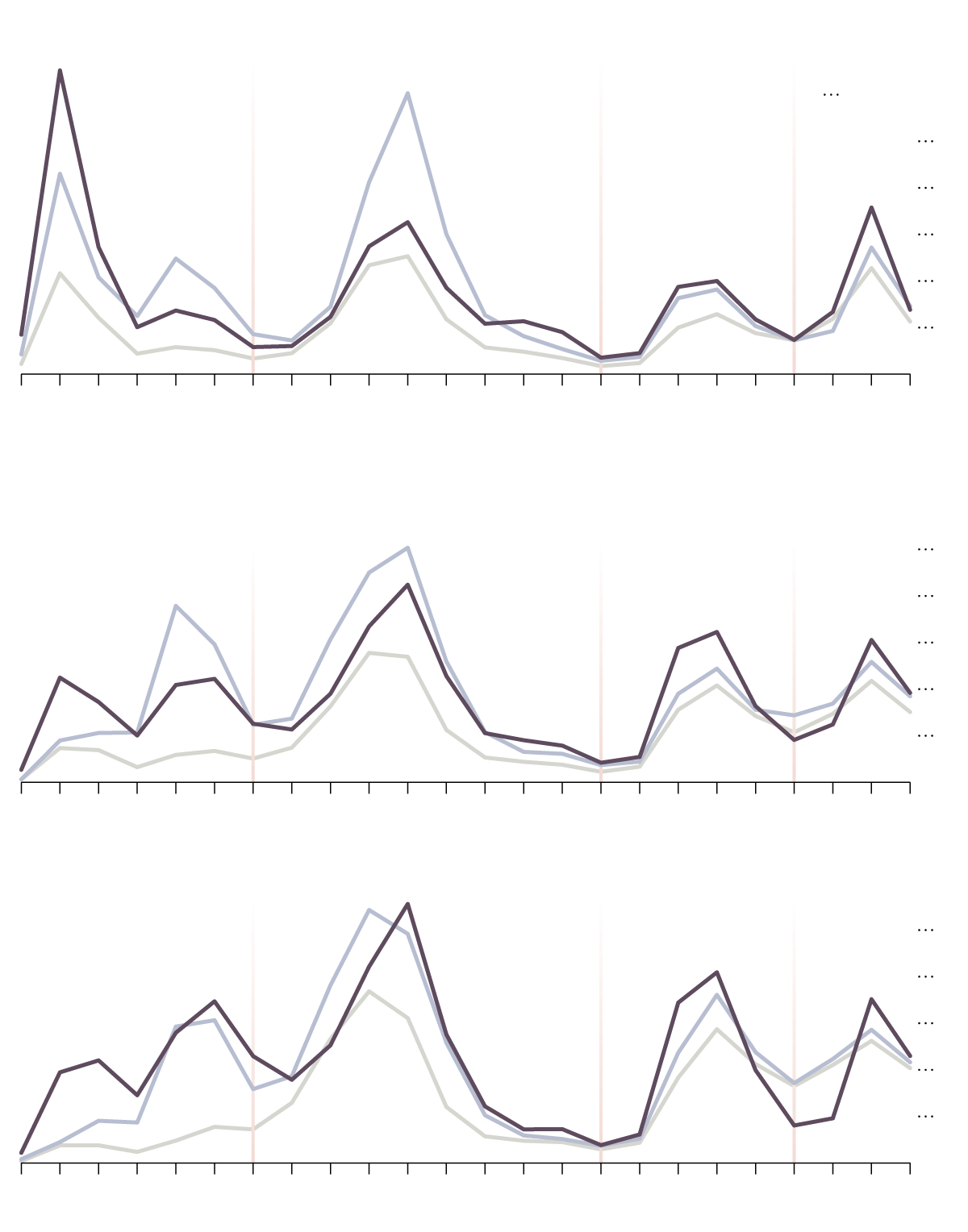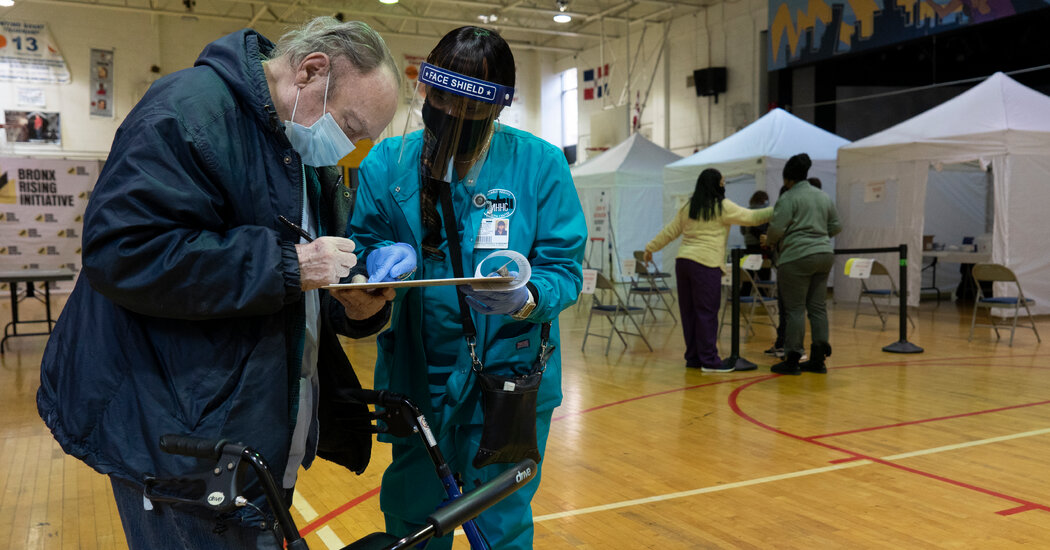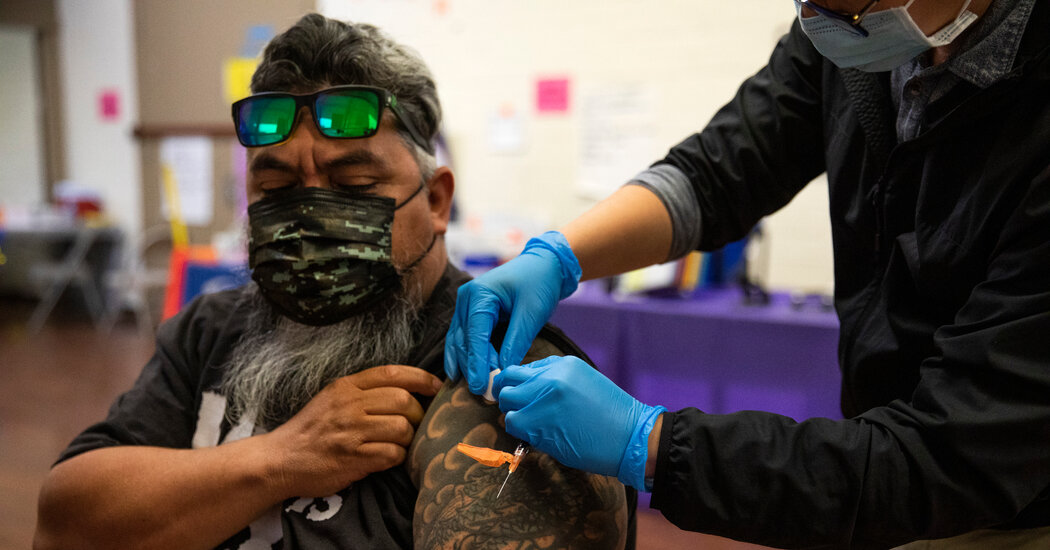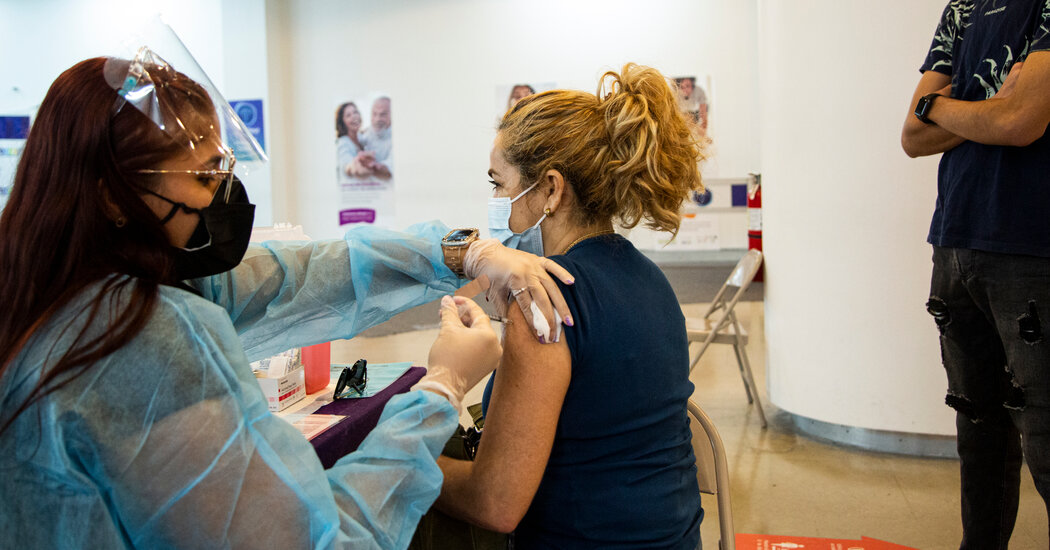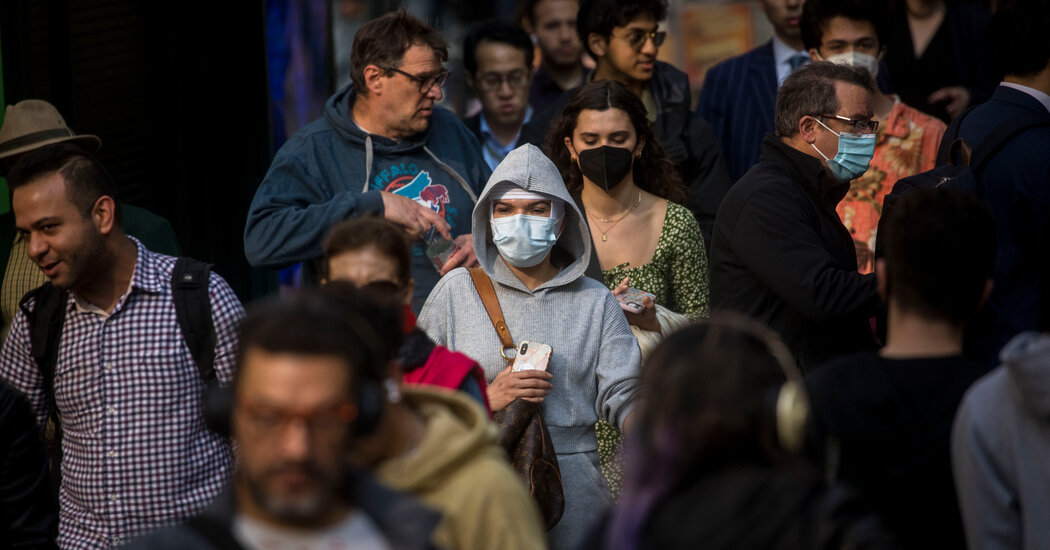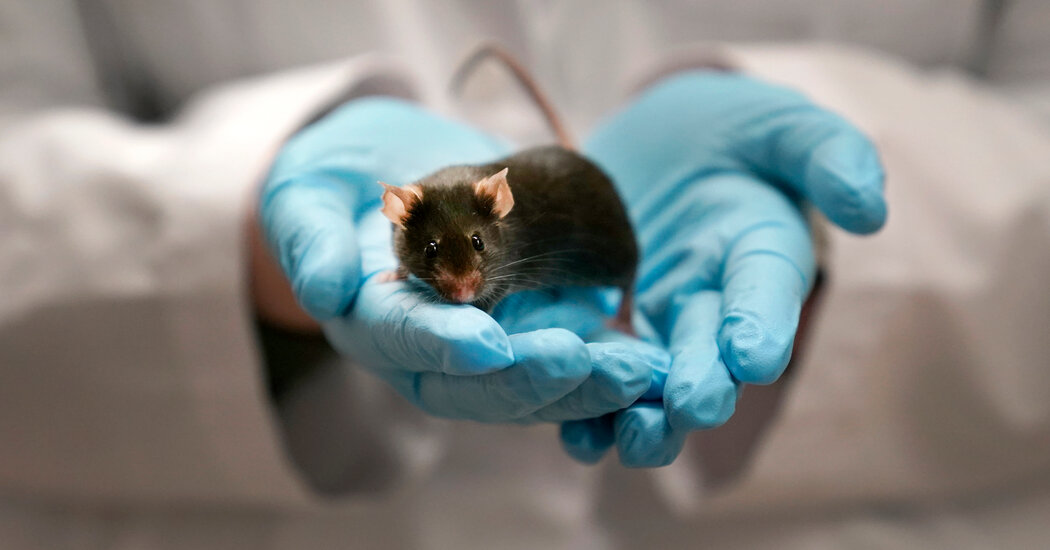Updated Covid vaccines, expected soon after Labor Day, were designed to thwart Omicron variants. But money to distribute them has dried up.Long past the point when pollsters said there were no more Americans willing to be vaccinated against the coronavirus, Coral Garner kept finding them.An organizer of mobile clinics for the Minnesota Department of Health, she arranged to provide vaccines and booster shots to people who had resisted them, setting up in a retrofitted city bus outside a Nigerian church, a Hmong senior center, a Somali mall and dozens of other sites.But even as the United States now prepares for a critical campaign to deliver Omicron-specific booster shots, Ms. Garner’s job no longer exists. In June, her contract position was canceled because the state said funding had dried up.At the very moment a better coronavirus vaccine is expected to finally become available, America’s vaccination program is feeling the effects of a long period of retreat.Local programs to bring shots to the places where Americans gather and the institutions they trust have folded, a consequence in some cases of congressional resistance to more pandemic response spending.The same local health department workers responsible for Covid and flu shots this fall have also, without new staffing, been juggling a monkeypox outbreak and childhood immunization deficits that have left some places susceptible to polio.And some state health officials, citing weak demand for vaccines and increased survival rates of late, said in interviews that they had stopped aggressively pushing coronavirus shots.With the virus killing far fewer people than it once did and many Americans reverting to their prepandemic ways, the country’s no-expenses-spared attitude to saving lives has evolved into a response that has put a greater onus on individuals to protect themselves. In keeping with that approach, many health officials believe the vaccine machinery is in place to meet what they expect, lamentably, to be tepid demand this fall.Tess Holman, held her daughter, Margot Holman, 1, as she received the Covid vaccine at the Mall of America in Bloomington, Minn., in June.Jenn Ackerman for The New York TimesBut others are worried that the country is surrendering a decisive opportunity to stoke that demand and restore the more robust vaccination efforts that lifted last year’s initial rollout.“We are watching the dismantling of the hyperlocal infrastructure that actually brought needles to arms in the most vulnerable communities in the country,” said Stephen Thomas, the director of the Center for Health Equity at the University of Maryland. “To this day, vaccine uptake in the United States is embarrassing.”The Biden administration said some 70,000 sites were prepared to vaccinate people this fall. While 60 percent of those are pharmacies, they also include doctor’s offices, community health centers and rural health clinics.States can also seek money from the Federal Emergency Management Agency for certain vaccination-related expenses, like setting up sites, buying equipment and offering translation or transportation services.Read More on the Coronavirus PandemicHeavy Toll: The average life expectancy of Americans fell precipitously in 2020 and 2021. The decline, largely driven by the pandemic, was particularly pronounced among Indigenous communities.Boosters: An influential panel of expert advisers to the Centers for Disease Control and Prevention recommended updated coronavirus booster shots to the vast majority of Americans, clearing the way for health workers to begin giving people the redesigned shots within days.Paxlovid Study: The Covid-19 medication Paxlovid reduced hospitalizations and deaths in older patients, but made no difference for patients under 65, new research from Israel found.Moderna’s Lawsuits: The vaccine manufacturer sued Pfizer and BioNTech, claiming that its rivals’ Covid-19 shot copied groundbreaking technology that Moderna had developed before the pandemic.Having shifted much of the rollout to private sites, though, states have been promised FEMA reimbursements on a relatively modest $550 million in vaccination spending so far this year. Last year, that figure was $8.5 billion.And while providers are supposed to vaccinate everyone for free, with or without insurance, the federal government ran out of money this spring to offer reimbursements for shots for uninsured people, making it more difficult for them to receive boosters.Sonya Bernstein, a senior policy adviser for the White House Covid response team, said federal spending to support vaccination efforts was being held back by a stalemate in Congress over the administration’s request for billions of dollars in additional pandemic aid. Republicans have said that additional coronavirus spending could be covered with funding already approved by Congress, an assertion that some state health officials say is false.“We are working with less because Congress has not provided us with that funding,” Ms. Bernstein said. “But that has not gotten in the way of our preparations. We’re working day in and day out to make sure states and our partners have the resources and support they need.”The United States is leaning ever more heavily on vaccines to defend against the virus at a time when health officials are pulling back on other preventive measures, like masking, distancing and quarantining.The fall vaccination campaign, which is expected to begin soon after Labor Day, could be crucial. Many Americans have gone months since their last Covid vaccine or infection, allowing immune defenses to wane. More indoor gatherings are on the horizon, and epidemiologists are predicting roughly 100,000 to 165,000 additional Covid deaths by the spring.And, for the first time, the government has bought vaccines that were reformulated in response to the virus’s evolution. Manufacturers may finally have gained on the pathogen: The Omicron subvariant that the updated shots were designed to protect against remains dominant in the United States.But, at the same time, the vaccination campaign is lagging. While two-thirds of Americans have completed the primary vaccine series, only about one-third have received boosters. The country’s per capita booster coverage trails that of some 70 other nations, according to Our World in Data.Some are worried that the country is surrendering a decisive opportunity to stoke demand for and restore the more robust vaccination efforts that lifted last year’s initial rollout.Hannah Beier for The New York TimesPartly as a result, scientists said, Americans this year have died from Covid at a rate 80 percent higher than Canadians and 30 percent higher than residents of the European Union.“We have criticisms of the way the initial vaccine rollout happened, but there was really a very significant effort to get everyone vaccinated,” said Elizabeth Wrigley-Field, a University of Minnesota sociologist, who mentioned mandates, financial rewards and large events. “None of that really exists with boosters.”With Covid deaths having plateaued around 480 a day, policymakers are grappling with whether renewed investments are needed. Some states believe they are not.In Alabama, where one-fifth of residents are boosted, Dr. Burnestine Taylor, the state’s medical officer for disease control and prevention, said officials had pared back health department clinics and become more reliant on pharmacies as demand dropped. The decision to receive additional shots, she said, now fell to individuals.“At this point, we’re not doing a hard push,” Dr. Taylor said. “It’s a personal decision.”Even some more proactive efforts have run into a wall of complacency. In Camden County, N.J., health workers have visited community events and knocked on doors, but they have not encountered as many takers as they had hoped, said Paschal Nwako, the health officer there.But other health workers said that they were still winning converts, if fewer than last year, including those who had been confused about boosters or unable to find clinics with evening availability.In Madison, Wis., Aaron Perry, a former police officer, said that $100 stipends provided by the state have helped draw a dozen or so booster recipients to his health clinic every Friday, many from Black barbershops where he also runs health screening centers.In San Bernardino, Calif., Jacinda Abdul-Mutakabbir, a pharmacist at Loma Linda University, said clinics late this spring could still attract as many as 30 first dose recipients.And in Bismarck, N.D., Renae Moch, the public health director, said organizations like food pantries and homeless shelters still wanted to host regular clinics. But with surge staffing over, workers exhausted and positions harder to fill, she said she could only hold monthly pop-up clinics at a limited number of sites — and none in September, when back-to-school immunizations would consume the staff.Of the hundreds of barbershops nationally that once hosted vaccination events, nine out of 10 are struggling to keep offering shots, said Dr. Thomas, of the University of Maryland, who has helped organize them. In some cases, he said, hospitals or pharmacies that eagerly used to send doses or staff have reported not having the money to partner with barbershops again or being concerned that small turnouts will not make it worth their while.Mike Brown cuts the hair of Michael Venable at the The Shop Spa, a barbershop outside of Washington, D.C. Michael A. McCoy for The New York Times“The health care providers lost interest in us,” said Mike Brown, a barber outside Washington, D.C. “But I don’t think now is the time to give up the fight. People are still dying.”For poorer Americans, the decrease in public vaccination sites could reduce the number who receive shots this fall, experts said.In New York, Emily Gerteis, who arranges shots for people living on the street or in shelters at the Center for Urban Community Services, recalled convincing a patient this summer to be vaccinated. But when she suggested a pharmacy, the patient refused, preferring to hold out for city clinics and their $100 incentives, Ms. Gerteis said.The problem was that those offerings no longer existed. The patient was not vaccinated.“A year ago, there was all this money for advertising, and they were throwing money at vaccines,” said Dr. Zeke McKinney, a physician in Minneapolis who had helped to organize vaccinations at his local barbershop until funding dried up. “Now, it’s like nobody cares.”The White House is still seeking more funding from Congress, which it says is also needed to produce tests and develop next-generation Covid vaccines.For now, some health officials said they were prepared to rev back up shuttered sites in the event demand surged, even if their workers were increasingly depleted. On some days recently, Dr. Mysheika Roberts, the health commissioner in Columbus, Ohio, said she needed to divert two-thirds of her Covid vaccination specialists to monkeypox clinics.“It’s a bit overwhelming for some of our staff members,” she said.Experts said that restoring health workforces and maintaining vaccine outreach could help break a boom-and-bust cycle in public health spending that has especially hurt marginalized Americans. Early investments, for example, helped narrow racial gaps in primary series vaccination rates. But in the booster rollout, considerable racial disparities have re-emerged.The relaxation of federal Covid guidance and the reluctance to incentivize booster shots has not made it any easier to persuade people of the benefits of additional doses, some health officials said.“There’s a lot of messaging from federal sources that things are good and we’re back to normal,” said Dr. Clay Marsh, West Virginia’s Covid czar. “It’s mixed messaging.”Dr. Mysheika Roberts has had to divert two-thirds of her Covid vaccination specialists to monkeypox clinics recently.Maddie McGarvey for The New York TimesHealth experts encouraged making Covid shots a routine part of people’s medical care, including by enlisting more primary care doctors in the rollout. More creative marketing could also help generate demand, said Dr. Kevin Schulman, a Stanford University professor.One example, he said, would be a campaign framed around protecting older relatives at fall or winter holiday gatherings. Despite the scientific uncertainties, he also said the time had to come to promise Americans that they would not be asked back for further Covid vaccines for at least a year — and that, when they were, it would be for an “annual Covid vaccine,” rather than a “booster.”“Marketers spend huge amounts of time trying to figure these things out,” Dr. Schulman said. “Unfortunately, we just haven’t seen effort devoted in that direction.”Ms. Bernstein, the White House adviser, said the administration was regularly surveying people about booster shots and using the results to inform messages it suggested to on-the-ground partners.Ben Weston, Milwaukee County’s chief health policy adviser, said the nation’s underfunded booster campaign had hurt the same vulnerable and often nonwhite residents who have long struggled to gain access to good medical care.“It’s putting up barriers,” he said, “particularly for populations that are more susceptible to those barriers.”
Read more →


